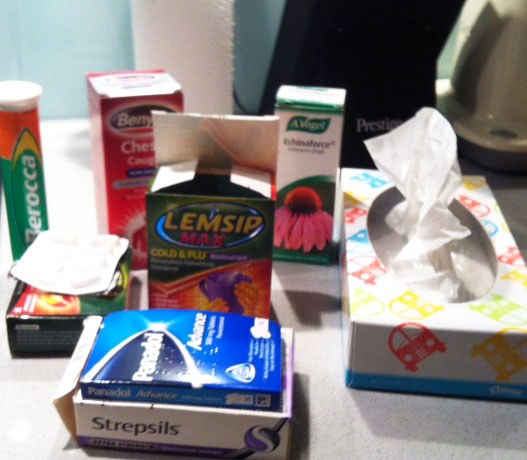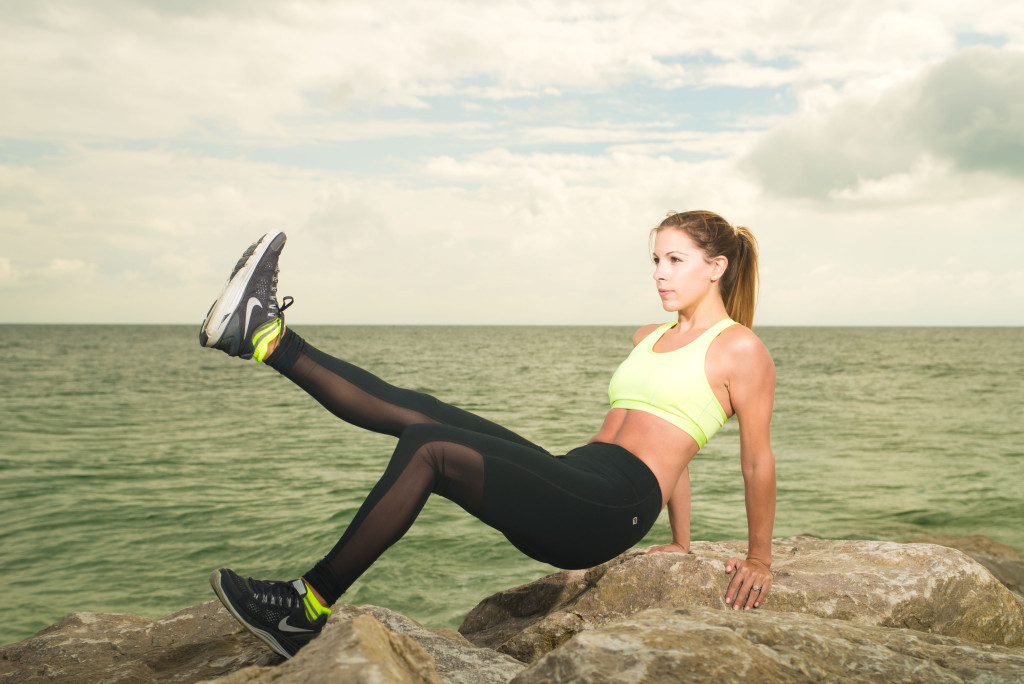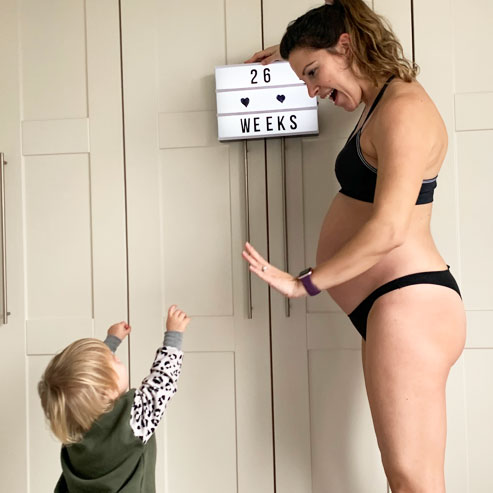
Like many of winter’s victims, I started the New Year with a terrible bout of flu. It knocked me for nine and certainly ruled out an early start on any fitness-related resolutions. But as all ailments and pains do, the symptoms passed after a few days and I’m already steadily regaining my pre-Christmas strength. Although I hated not being able to exercise at the time, my body is healthier for the much-needed rest and I’m able to work much harder now than I might be if I’d put extra stress on my system and prolonged the illness.
It’s important to remember that your body is a simple system of input and output. We only produce so much energy to distribute for different functions. There are the basic everyday processes like circulating blood and oxygen around the body, regenerating cells, sending primary nervous signals from the brain and eliminating toxins. If, on top of this, your immune system is fighting off an infection or your body is attempting to heal from an injury, much of its energy will be redirected for those purposes. As a result, there is less capacity left over to fuel high-intensity demands like exercise. Your body will rise to the demand, but only at the sacrifice of other restorative functions essential for your wellbeing. By forcing yourself to do a round of burpees, you may be putting your body at cross purposes with itself and actively preventing recovery.
Any number of things can disrupt your training – illness, injury, period pain, feelings of extreme stress or depression, and of course those logistical things like simply having too much to do. In the face of all today’s pressures (including the expectations we have of ourselves), I wanted to compile a definitive guide for when to push through the pain and when to pull back. I hope this helps you put your training in perspective and appreciate your body for all the wonderful things it can do.

| Minor Cold | Virus | Muscle Pain | Bone or Joint Pain | Period Pain | Stress | |
|---|---|---|---|---|---|---|
| Symptoms | Above the neck symptoms: stuffed or runny nose, headache, tickly cough | Full-body symptoms: achy muscles, exhaustion, virus, bad stomach | Post-exercise stiffness or DOMS (delayed onset muscle soreness) | Sharp pain from specific movements, constant discomfort | Stomach ache, bloating, nausea | Distracted, preoccupied, overworked, anxious |
| Exercise or Rest | Exercise | Rest | Exercise | Rest | Exercise | Exercise |
| Intensity Level | Low to medium | Very low | Low to medium | Low | Low to medium | Moderate to high |
| Recommended Activity | Walking, jogging, Pilates, low-impact circuits, yoga | Stretching, meditation | Yoga, walking, cycling, jogging, crosstrainer | Walking, swimming, easy cardio | Outdoor cardio: jogging, skipping, cycling | HIIT, circuits, Ashtanga yoga, spin |
| Reason | Gentle exercise can help to clear the cobwebs and loosen any phlegm you need to get our of your system. But you should still reserve some energy to support your immune system; don't push your body as hard as you would when you feel healthy. | Your immune system is firing on all cylinders and you should do everything you can to support it. A gentle stretch may revive your senses, but anything more intensive is likely to be counterproductive to your recovery. | Go easy on your joints and steer clear of any exercise likely to tear down any already strained muscle fibres. Your body is working hard to rebuild your muscles, and what you do during rest days is every bit as important as what you do during workouts. Flush out lactic acid with gentle cardio, and refuel with lots of protein and vitamins. | Intense pain can be a sign of serious damage and you must be careful not to further aggravate the problem area. At the same time, complete inactivity can cause further stiffness and discomfort. Never push your body to do exercises that feel unpleasant, unless a physio has specifically recommended them. | A bit of fresh air can often help to relieve some of the symptoms associated with that time of the month. You probably won't feel like pulling on your lycra and picking up any serious pace, but I personally prefer to take on a short run or skipping session in a pair of forgiving sweats than to curl up on my sofa and dwell on the pain. | If you have a big work or personal problem on your mind, I always recommend commiting to short, intense training sessions. Working extra hard allows you to cut down on total workout time, and interval-based exercise helps release happiness hormones like epinephrine to make you feel more positive and productive. Keep workouts to 45min or less. |
These are the rules I’ve found most effective for me. If you have rules of your own or different experiences to add, I’d love to hear about them. Please get in touch or leave a comment below to share your views.





1 Comment
Lucie Palka
I think these are great guidelines to go by! I usually run if I have a minor cold!